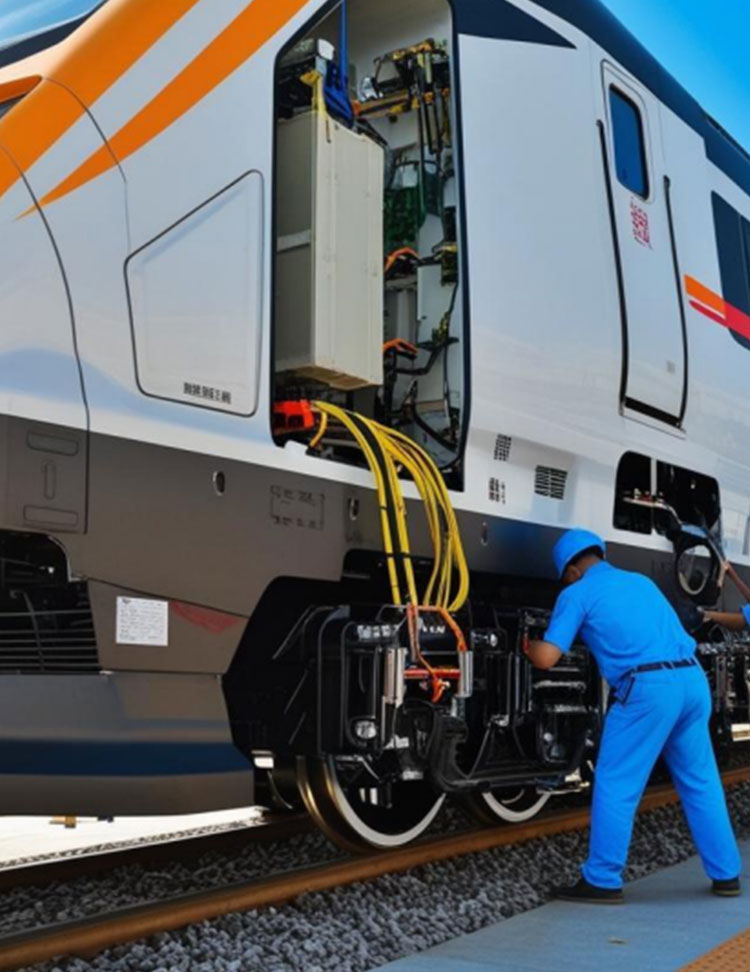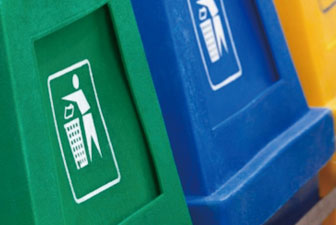Background
High-speed trains and locomotives rely on thousands of critical components—such as bogies, brakes, and traction motors—to ensure safe and efficient operation. Traditionally, railway maintenance has been heavily dependent on manual inspections and paper-based records, which often result in incomplete data, limited traceability, and delayed responses to faults.As the industry shifts towards preventive and data-driven maintenance strategies, there's a growing need for intelligent solutions that enable full lifecycle management—from procurement and installation to real-time monitoring, scheduled servicing, and retirement.
To meet these needs, Chainway has integrated advanced RFID and IoT technologies into a comprehensive maintenance solution, powered by its MC51 Built-in RFID Reader. This innovation transforms railway maintenance from reactive troubleshooting to proactive asset management.
Challenges
-
Fragmented Data Across the Ecosystem
A single locomotive contains more than 2,000 key components. Data is scattered across manufacturers, depots, and maintenance teams, making unified tracking and coordination a major challenge. -
Maintenance Decisions Relying on Limited Insight
Most operational and maintenance data remains undocumented or isolated. Without accurate historical data or environmental context, failure predictions are often based on guesswork. -
Challenging Operating Environments
Railway workshops are filled with metal structures, electromagnetic interference, oil, and dust. These harsh conditions frequently disrupt the performance of conventional electronic devices. -
Stringent Regulatory Requirements
National railway regulations mandate “one component, one file” traceability. Manual data entry is not only inefficient, but also prone to errors and potential fraud.
Solution
By integrating UHF RFID into critical components, each part is tagged with a high-performance anti-metal RFID tag carrying a unique ID. During maintenance, staff can instantly scan and retrieve key information—such as specifications, installation location, and service history—achieving seamless traceability with just one scan.The Chainway MC51 built-in RFID reader delivers industry-leading performance across hardware design, RF capability, and intelligent data processing, addressing core lifecycle management challenges.
1. Industrial-Grade Ruggedness
- IP67-certified for water and dust resistance; operates reliably in high-altitude, high-humidity, and high-temperature conditions.
- Reinforced housing survives drops from 1.5 meters on all six sides.
- 6-inch touchscreen supports glove operation, aided by an anti-mistouch algorithm.
- Ergonomic hardware buttons allow quick activation of RFID, barcode scanning, and custom functions.
- Compact built-in UHF antenna balances portability with powerful performance—ideal for confined spaces and warehouse operations.
- Compatible with next-gen Impinj Gen2X, enhancing tag sensitivity and extending reading range. Equipped with anti-interference radio technology to maintain high recognition accuracy (up to 99.8%) even in metal-heavy environments.
- Supports multi-tag reading and large-memory railway-grade tags, enabling structured digital record access.
- Integrates GPS and multiple sensors to bind component data with operator ID, operation time, and quality checks in real time.
- 5G connectivity enables instant cloud syncing of maintenance logs, forming tamper-proof digital records.
- Large internal storage supports up to 100,000 records and allows offline task execution when the network is unavailable.
- Upon scanning, the large display auto-loads relevant data—component specs, inspection standards, and past records—reducing search time to just 10 seconds and increasing work order efficiency by 65%.
Benefits
1. Increased Operational Efficiency
- Fault omission rate reduced from 18% to 0.5%.
- Inventory checks accelerated by 12x, reducing per-vehicle inspection time from 3 days to 0.5 hours.
- Average repair time decreased from 4.5 hours to 22 minutes.
- Integrated UHF RFID, 5G, and sensor modules cut system deployment time by 60%.
- Each component is assigned a unique RFID tag for one-code-per-item tracking, creating a tamper-proof digital record.
- Achieved 100% digital record-keeping, improving national audit efficiency by 90%.
- Preventive maintenance rate rose from 30% to 85%.
- Unplanned failures reduced by 52%.
- Annual maintenance costs per train decreased by millions.
- Component lifespan extended by 15–20%, reducing total lifecycle costs by over 10%.
- Deployed across high-speed rail bases for 12 major component types (e.g., wheelsets, bearings).
- Sets a benchmark for digital railway maintenance, supporting standardization across metro, urban rail, aviation, and heavy equipment sectors.






